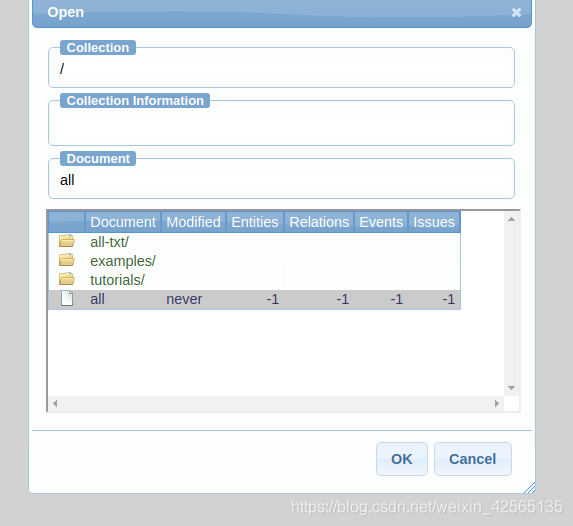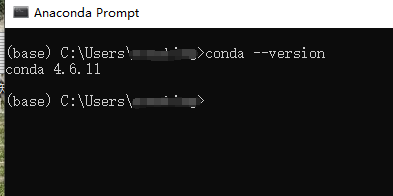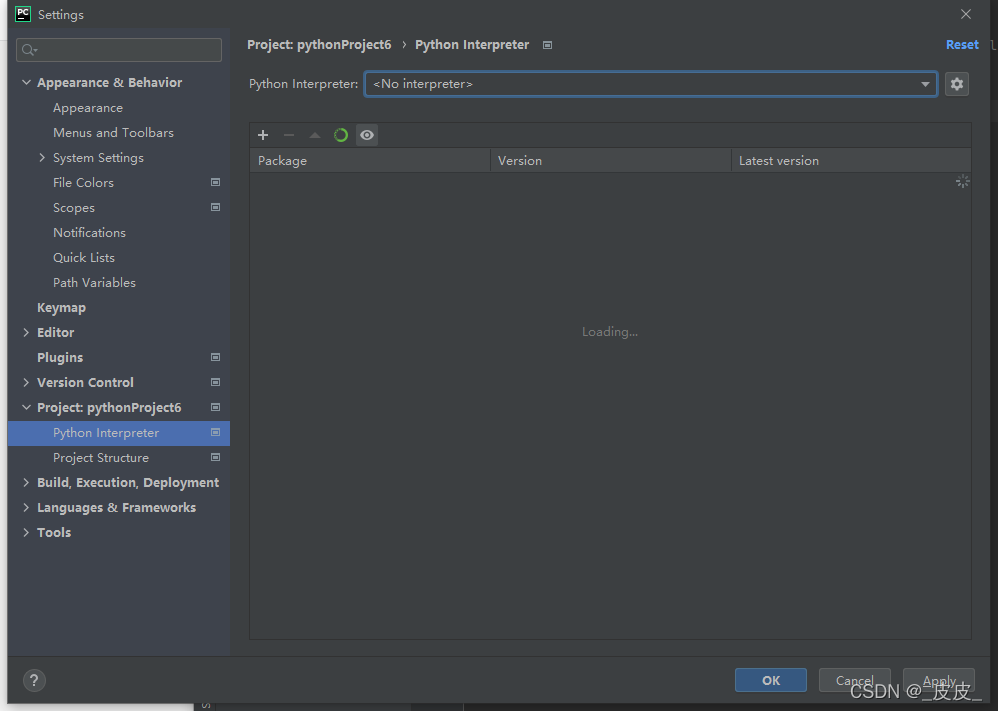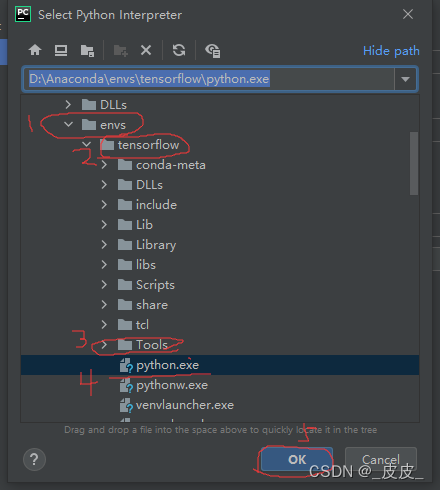find 文件夹名称 -name '*.txt'|sed -e 's|.txt|.ann|g'|xargs touch,其意思是对每个txt文件都创建一个空的标引文件.ann,因为BRAT是要求的collection中,每个txt文件是必须有一个对应的.ann文件的,方便放置标引内容,这个ann文件的格式也挺规范。
jtt@jtt-System-Product-Name:/var/www/html/brat/ainer/data$ find all-txt -name '*.txt'|sed -e 's|\.txt|.ann|g'|xargs touch
jtt@jtt-System-Product-Name:/var/www/html/brat/ainer/data$ ls
all-txt
jtt@jtt-System-Product-Name:/var/www/html/brat/ainer/data$ cd all-txt
jtt@jtt-System-Product-Name:/var/www/html/brat/ainer/data/all-txt$ ls
2021-10.ann 2021-2.ann 2021-4.ann 2021-6.ann 2021-8.ann
2021-10.txt 2021-2.txt 2021-4.txt 2021-6.txt 2021-8.txt
2021-1.ann 2021-3.ann 2021-5.ann 2021-7.ann 2021-9.ann
2021-1.txt 2021-3.txt 2021-5.txt 2021-7.txt 2021-9.txt
3.标注
在自己要标注的数据目录添加配置文件annotation.conf,编辑标引规范,就是写明白自己标注的都有哪些命名实体、哪些语义关系。eg:
[entities]
OTH
LOC
NAME
ORG
TIME
TIL
NUM
[relations]
[events]
[attributes]
jtt@jtt-System-Product-Name:~$ cd /var/www/html/brat/ainer
jtt@jtt-System-Product-Name:/var/www/html/brat/ainer$ ls
annotation.conf data visual.conf
jtt@jtt-System-Product-Name:/var/www/html/brat/ainer$ vi annotation.conf
点击键盘 i 进行实体类别编辑,如下修改
Method-tech
Area-subject
Time
Other
关系
Applyied Arg1:Method-tech,Arg2:Area-subject
Associate Arg1:Method-tech,Arg2:Method-tech
Associate2 Arg1:Area-subject,Arg2:Area-subject
Emergence Arg1:Method-tech,Arg2:Time
Located Arg1:Other, Arg2:Other
Geographical_part Arg1:Other, Arg2:Other
Family Arg1:Person, Arg2:Other
Employment Arg1:Other, Arg2:Other
Ownership Arg1:Other, Arg2:Other
属性
Merge-time Arg:<relation>
点击esc退出编辑
光标到最后输入:wq即可返回命令界面
</relation>
点击BRAT页面,用自己的账号登录,从页面上直接进入collection中,找到文件进行标引。
命名实体标引直接用光标拖拽,关系标引用鼠标将一个实体指向另一个实体即可。
jtt@jtt-System-Product-Name:~$ cd /var/www/html/brat
jtt@jtt-System-Product-Name:/var/www/html/brat$ python2 standalone.py
Serving brat at http://127.0.0.1:8001
现在遇到一个问题:找不到要标注的数据在哪里,然后通过代码测试 总算找到了。之后将配置文件和数据移动到了正确位置中。【这就是坑-跳出来了】总结:在data中新建一个文件夹/var/www/html/brat/data/all-txt,里面包含文本/.ann/以及配置文件annotation.conf 和 visual.conf
jtt@jtt-System-Product-Name:/var/www/html/brat$ cd data
jtt@jtt-System-Product-Name:/var/www/html/brat/data$ ls
6.ann 6.txt examples tutorials
移动:jtt@jtt-System-Product-Name:/var/www/html/brat/ainer/data$ mv all-txt /var/www/html/brat/data/
jtt@jtt-System-Product-Name:/var/www/html/brat$ cd data
jtt@jtt-System-Product-Name:/var/www/html/brat/data$ ls
6.ann 6.txt all-txt examples tutorials
jtt@jtt-System-Product-Name:/var/www/html/brat/data$ rm 6.ann
jtt@jtt-System-Product-Name:/var/www/html/brat/data$ rm 6.txt
jtt@jtt-System-Product-Name:/var/www/html/brat/data$ ls
all-txt examples tutorials
ok了
接下来将配置文件重新修改一下
jtt@jtt-System-Product-Name:/var/www/html/brat$ vi annotation.conf
修改完成后进行标注
可以看到图中有了数据了

三.实战标注过程
选择要标注的实体,直接弹出框框进行标注,最后可以将标注好的数据导出
四.模型
根据标注的结果转化成BIO标注,选择bert-bilstm-crf模型进行标注。
怎么标注呢
1.自动标注的流程及结果展示
进入目录/var/www/html/brat/tools;
输入:python anntoconll.py 要进行BIO标注的文本文件
ok
eg:
ann文件标注了两个实体:T1 Method-tech 4 12 COVID-19
T2 Other 225 237 intelligence
运行代码:python anntoconll.py /var/www/html/brat/data/all-txt/2021-1.txt
生成了标注后的文件:文件名.conll
结果:

2.写代码标注:也很简单,这里说说思路
根据标注的.ann文件,找到是实体的标注
第一个识别的标为B,判断如果他后面的词还是实体,就给标注为I
当不是实体的其他标为O
3.模型训练
输入实体识别模型中可以直接训练,不同模型的输入可能不相同,稍微修改数据样式即可
错误解决
正常的配置文件,在实体标注时可以,在bio标注时报错。同样在bio标注时正确,在实体识别时报错,究其原因及解决办法--如下
原因:
py文件中代码报错
解决办法:
在brat/server/src/sspostproc.py文件中,实体标注时代码:
jtt@jtt-System-Product-Name:~$ cd /var/www/html/brat
jtt@jtt-System-Product-Name:/var/www/html/brat$ python2 standalone.py
Serving brat at http://127.0.0.1:8001
文件内容为
#!/usr/bin/env python
# Python version of geniass-postproc.pl. Originally developed as a
# heuristic postprocessor for the geniass sentence splitter, drawing
# in part on Yoshimasa Tsuruoka's medss.pl.
from __future__ import with_statement
import re
INPUT_ENCODING = "UTF-8"
OUTPUT_ENCODING = "UTF-8"
DEBUG_SS_POSTPROCESSING = False
__initial = []
# TODO: some cases that heuristics could be improved on
# - no split inside matched quotes
# - "quoted." New sentence
# - 1 mg .\nkg(-1) .
# breaks sometimes missing after "?", "safe" cases
__initial.append((re.compile(r'\b([a-z]+\?) ([A-Z][a-z]+)\b'), r'\1\n\2'))
# breaks sometimes missing after "." separated with extra space, "safe" cases
__initial.append((re.compile(r'\b([a-z]+ \.) ([A-Z][a-z]+)\b'), r'\1\n\2'))
# join breaks creating lines that only contain sentence-ending punctuation
__initial.append((re.compile(r'\n([.!?]+)\n'), r' \1\n'))
# no breaks inside parens/brackets. (To protect against cases where a
# pair of locally mismatched parentheses in different parts of a large
# document happen to match, limit size of intervening context. As this
# is not an issue in cases where there are no interveining brackets,
# allow an unlimited length match in those cases.)
__repeated = []
# unlimited length for no intevening parens/brackets
__repeated.append((re.compile(r'(\([^\[\]\(\)]*)\n([^\[\]\(\)]*\))'),r'\1 \2'))
__repeated.append((re.compile(r'(\[[^\[\]\(\)]*)\n([^\[\]\(\)]*\])'),r'\1 \2'))
# standard mismatched with possible intervening
__repeated.append((re.compile(r'(\([^\(\)]{0,250})\n([^\(\)]{0,250}\))'), r'\1 \2'))
__repeated.append((re.compile(r'(\[[^\[\]]{0,250})\n([^\[\]]{0,250}\])'), r'\1 \2'))
# nesting to depth one
__repeated.append((re.compile(r'(\((?:[^\(\)]|\([^\(\)]*\)){0,250})\n((?:[^\(\)]|\([^\(\)]*\)){0,250}\))'), r'\1 \2'))
__repeated.append((re.compile(r'(\[(?:[^\[\]]|\[[^\[\]]*\]){0,250})\n((?:[^\[\]]|\[[^\[\]]*\]){0,250}\])'), r'\1 \2'))
__final = []
# no break after periods followed by a non-uppercase "normal word"
# (i.e. token with only lowercase alpha and dashes, with a minimum
# length of initial lowercase alpha).
__final.append((re.compile(r'\.\n([a-z]{3}[a-z-]{0,}[ \.\:\,\;])'), r'. \1'))
# no break in likely species names with abbreviated genus (e.g.
# "S. cerevisiae"). Differs from above in being more liberal about
# separation from following text.
__final.append((re.compile(r'\b([A-Z]\.)\n([a-z]{3,})\b'), r'\1 \2'))
# no break in likely person names with abbreviated middle name
# (e.g. "Anton P. Chekhov", "A. P. Chekhov"). Note: Won't do
# "A. Chekhov" as it yields too many false positives.
__final.append((re.compile(r'\b((?:[A-Z]\.|[A-Z][a-z]{3,}) [A-Z]\.)\n([A-Z][a-z]{3,})\b'), r'\1 \2'))
# no break before CC ..
__final.append((re.compile(r'\n((?:and|or|but|nor|yet) )'), r' \1'))
# or IN. (this is nothing like a "complete" list...)
__final.append((re.compile(r'\n((?:of|in|by|as|on|at|to|via|for|with|that|than|from|into|upon|after|while|during|within|through|between|whereas|whether) )'), r' \1'))
# no sentence breaks in the middle of specific abbreviations
__final.append((re.compile(r'\b(e\.)\n(g\.)'), r'\1 \2'))
__final.append((re.compile(r'\b(i\.)\n(e\.)'), r'\1 \2'))
__final.append((re.compile(r'\b(i\.)\n(v\.)'), r'\1 \2'))
# no sentence break after specific abbreviations
__final.append((re.compile(r'\b(e\. ?g\.|i\. ?e\.|i\. ?v\.|vs\.|cf\.|Dr\.|Mr\.|Ms\.|Mrs\.)\n'), r'\1 '))
# or others taking a number after the abbrev
__final.append((re.compile(r'\b([Aa]pprox\.|[Nn]o\.|[Ff]igs?\.)\n(\d+)'), r'\1 \2'))
# no break before comma (e.g. Smith, A., Black, B., ...)
__final.append((re.compile(r'(\.\s*)\n(\s*,)'), r'\1 \2'))
def refine_split(s):
"""
Given a string with sentence splits as newlines, attempts to
heuristically improve the splitting. Heuristics tuned for geniass
sentence splitting errors.
"""
if DEBUG_SS_POSTPROCESSING:
orig = s
for r, t in __initial:
s = r.sub(t, s)
for r, t in __repeated:
while True:
n = r.sub(t, s)
if n == s: break
s = n
for r, t in __final:
s = r.sub(t, s)
# Only do final comparison in debug mode.
if DEBUG_SS_POSTPROCESSING:
# revised must match original when differences in space<->newline
# substitutions are ignored
r1 = orig.replace('\n', ' ')
r2 = s.replace('\n', ' ')
if r1 != r2:
print >> sys.stderr, "refine_split(): error: text mismatch (returning original):\nORIG: '%s'\nNEW: '%s'" % (orig, s)
s = orig
return s
if __name__ == "__main__":
import sys
import codecs
# for testing, read stdin if no args
if len(sys.argv) == 1:
sys.argv.append('/dev/stdin')
for fn in sys.argv[1:]:
try:
with codecs.open(fn, encoding=INPUT_ENCODING) as f:
s = "".join(f.read())
sys.stdout.write(refine_split(s).encode(OUTPUT_ENCODING))
except Exception, e:
print >> sys.stderr, "Failed to read", fn, ":", e
</->
BIO标注时代码:
jtt@jtt-System-Product-Name:~$ cd /var/www/html/brat/tools
jtt@jtt-System-Product-Name:/var/www/html/brat/tools$  python anntoconll.py /var/www/html/brat/data/2021-pre2000/2021-1.txt
内容为
#!/usr/bin/env python
# Python version of geniass-postproc.pl. Originally developed as a
# heuristic postprocessor for the geniass sentence splitter, drawing
# in part on Yoshimasa Tsuruoka's medss.pl.
import re
INPUT_ENCODING = "UTF-8"
OUTPUT_ENCODING = "UTF-8"
DEBUG_SS_POSTPROCESSING = False
__initial = []
# TODO: some cases that heuristics could be improved on
# - no split inside matched quotes
# - "quoted." New sentence
# - 1 mg .\nkg(-1) .
# breaks sometimes missing after "?", "safe" cases
__initial.append((re.compile(r'\b([a-z]+\?) ([A-Z][a-z]+)\b'), r'\1\n\2'))
# breaks sometimes missing after "." separated with extra space, "safe" cases
__initial.append((re.compile(r'\b([a-z]+ \.) ([A-Z][a-z]+)\b'), r'\1\n\2'))
# join breaks creating lines that only contain sentence-ending punctuation
__initial.append((re.compile(r'\n([.!?]+)\n'), r' \1\n'))
# no breaks inside parens/brackets. (To protect against cases where a
# pair of locally mismatched parentheses in different parts of a large
# document happen to match, limit size of intervening context. As this
# is not an issue in cases where there are no interveining brackets,
# allow an unlimited length match in those cases.)
__repeated = []
# unlimited length for no intevening parens/brackets
__repeated.append(
(re.compile(r'(\([^\[\]\(\)]*)\n([^\[\]\(\)]*\))'), r'\1 \2'))
__repeated.append(
(re.compile(r'(\[[^\[\]\(\)]*)\n([^\[\]\(\)]*\])'), r'\1 \2'))
# standard mismatched with possible intervening
__repeated.append(
(re.compile(r'(\([^\(\)]{0,250})\n([^\(\)]{0,250}\))'), r'\1 \2'))
__repeated.append(
(re.compile(r'(\[[^\[\]]{0,250})\n([^\[\]]{0,250}\])'), r'\1 \2'))
# nesting to depth one
__repeated.append(
(re.compile(r'(\((?:[^\(\)]|\([^\(\)]*\)){0,250})\n((?:[^\(\)]|\([^\(\)]*\)){0,250}\))'),
r'\1 \2'))
__repeated.append(
(re.compile(r'(\[(?:[^\[\]]|\[[^\[\]]*\]){0,250})\n((?:[^\[\]]|\[[^\[\]]*\]){0,250}\])'),
r'\1 \2'))
__final = []
# no break after periods followed by a non-uppercase "normal word"
# (i.e. token with only lowercase alpha and dashes, with a minimum
# length of initial lowercase alpha).
__final.append((re.compile(r'\.\n([a-z]{3}[a-z-]{0,}[ \.\:\,\;])'), r'. \1'))
# no break in likely species names with abbreviated genus (e.g.
# "S. cerevisiae"). Differs from above in being more liberal about
# separation from following text.
__final.append((re.compile(r'\b([A-Z]\.)\n([a-z]{3,})\b'), r'\1 \2'))
# no break in likely person names with abbreviated middle name
# (e.g. "Anton P. Chekhov", "A. P. Chekhov"). Note: Won't do
# "A. Chekhov" as it yields too many false positives.
__final.append(
(re.compile(r'\b((?:[A-Z]\.|[A-Z][a-z]{3,}) [A-Z]\.)\n([A-Z][a-z]{3,})\b'),
r'\1 \2'))
# no break before CC ..
__final.append((re.compile(r'\n((?:and|or|but|nor|yet) )'), r' \1'))
# or IN. (this is nothing like a "complete" list...)
__final.append((re.compile(
r'\n((?:of|in|by|as|on|at|to|via|for|with|that|than|from|into|upon|after|while|during|within|through|between|whereas|whether) )'), r' \1'))
# no sentence breaks in the middle of specific abbreviations
__final.append((re.compile(r'\b(e\.)\n(g\.)'), r'\1 \2'))
__final.append((re.compile(r'\b(i\.)\n(e\.)'), r'\1 \2'))
__final.append((re.compile(r'\b(i\.)\n(v\.)'), r'\1 \2'))
# no sentence break after specific abbreviations
__final.append(
(re.compile(r'\b(e\. ?g\.|i\. ?e\.|i\. ?v\.|vs\.|cf\.|Dr\.|Mr\.|Ms\.|Mrs\.)\n'),
r'\1 '))
# or others taking a number after the abbrev
__final.append(
(re.compile(r'\b([Aa]pprox\.|[Nn]o\.|[Ff]igs?\.)\n(\d+)'), r'\1 \2'))
# no break before comma (e.g. Smith, A., Black, B., ...)
__final.append((re.compile(r'(\.\s*)\n(\s*,)'), r'\1 \2'))
def refine_split(s):
"""Given a string with sentence splits as newlines, attempts to
heuristically improve the splitting.
Heuristics tuned for geniass sentence splitting errors.
"""
if DEBUG_SS_POSTPROCESSING:
orig = s
for r, t in __initial:
s = r.sub(t, s)
for r, t in __repeated:
while True:
n = r.sub(t, s)
if n == s:
break
s = n
for r, t in __final:
s = r.sub(t, s)
# Only do final comparison in debug mode.
if DEBUG_SS_POSTPROCESSING:
# revised must match original when differences in space<->newline
# substitutions are ignored
r1 = orig.replace('\n', ' ')
r2 = s.replace('\n', ' ')
if r1 != r2:
print("refine_split(): error: text mismatch (returning original):\nORIG: '%s'\nNEW: '%s'" % (orig, s), file=sys.stderr)
s = orig
return s
if __name__ == "__main__":
import sys
import codecs
# for testing, read stdin if no args
if len(sys.argv) == 1:
sys.argv.append('/dev/stdin')
for fn in sys.argv[1:]:
try:
with codecs.open(fn, encoding=INPUT_ENCODING) as f:
s = "".join(f.read())
sys.stdout.write(refine_split(s).encode(OUTPUT_ENCODING))
except Exception as e:
print("Failed to read", fn, ":", e, file=sys.stderr)
</->
Original: https://blog.csdn.net/weixin_42565135/article/details/119491403
Author: Coding With you.....
Title: 惊!brat安装后进行标注-实战,并且通过一行代码自动标注为BIO格式,便于模型训练-and 错误解决
相关阅读
Title: Anaconda3中库的安装及在pycharm使用
文章目录
前言
Andaconda的安装前文已经提到。现在介绍Anaconda的使用。
一、查看版本
在电脑开始菜单。Anaconda文件夹下打开Anaconda Prompt。输入 conda --version

版本为4.6.11
; 二、创建虚拟环境及操作
1.创建环境
在Anaconda Prompt终端输入:
conda create --name 环境名 python=版本号
比如我创建一个环境名为tensorflow的虚拟环境,python版本为3.7
conda create --name tensorflow python=3.7
使用 conda info -e查看是否有你创建的虚拟环境

见上图,这里已经有了 tensorflow环境。(base为Anaconda安装时就存在的基础环境)
如果环境创建失败,请查看这篇博客,这里给出一种解决方法:虚拟环境失败请看这里
2.conda其他命令
conda remove -n tensorflow -all 删除名称为tensorflow的虚拟环境
conda list 列出本虚拟环境中所有安装的库,看命令行最前面括号里就知道目前所在哪个环境中。
conda activate tensorflow 激活tensorflow虚拟环境。不需要先退出上一个环境。
conda deactivate tensorflow 关闭虚拟环境
conda install pip 安装pip管理器
三、在指定环境中安装所需的库
1、首先激活环境 conda activate tensorflow(一定要先确认所在环境)
2、使用 pip安装管理器,在创建环境的时候会安装有 pip。如果没有就用conda安装
3、安装所需要的库。
例1:安装tensorflow2-cpu版本:安装2.2.
pip install tensorflow==2.2.0 -i https://pypi.tuna.tsinghua.edu.cn/simple
例2:安装tensorlayer 2.2.1版本
pip install tensorlayer==2.2.1 -i https://pypi.tuna.tsinhua.edu.cn/simple
安装时请指定安装源。这里指定清华源。官方源下载太慢,还容易出错。等待下载即可。
此处列出国内常用源地址(一般记住一个就行):
清华:https://pypi.tuna.tsinghua.edu.cn/simple
阿里云:http://mirrors.aliyun.com/pypi/simple/ 中国科技大学
https://pypi.mirrors.ustc.edu.cn/simple/
豆瓣:http://pypi.douban.com/simple/
安装指定的版本请用 库名==版本号指定;例: pip install numpy==1.16.1
卸载指定库: pip uninstall "库名" 例: pip uninstall numpy
四、Pycharm中使用安装了指定库的解释器
首先,打开自己的项目。在 File--settings--Project:"自己的项目名"打开之后可能是这样:没有东西

接下来,点红圈那里的齿轮,然后点 Add...:

选择 conda Environment

之后先点 Existing environment,然后再点2处的...

最后找到Anaconda安装的文件夹,跟据 1--2--3--4步找到 python.exe,点 OK就可以愉快的使用了

; 五、结语
如:我在 Anaconda中使用conda创建了名为 tensorflow的虚拟环境,在虚拟环境中使用 pip安装了 tensorflow==2.2,安装了 numpy==1.16.1。那么经过解释器的导入。现在再Pycharm中打开python文件就可以导入 tensorflow和 numpy,就不会出现找不到库的问题了
Original: https://blog.csdn.net/m0_52304861/article/details/123561307
Author: 皮皮
Title: Anaconda3中库的安装及在pycharm使用
